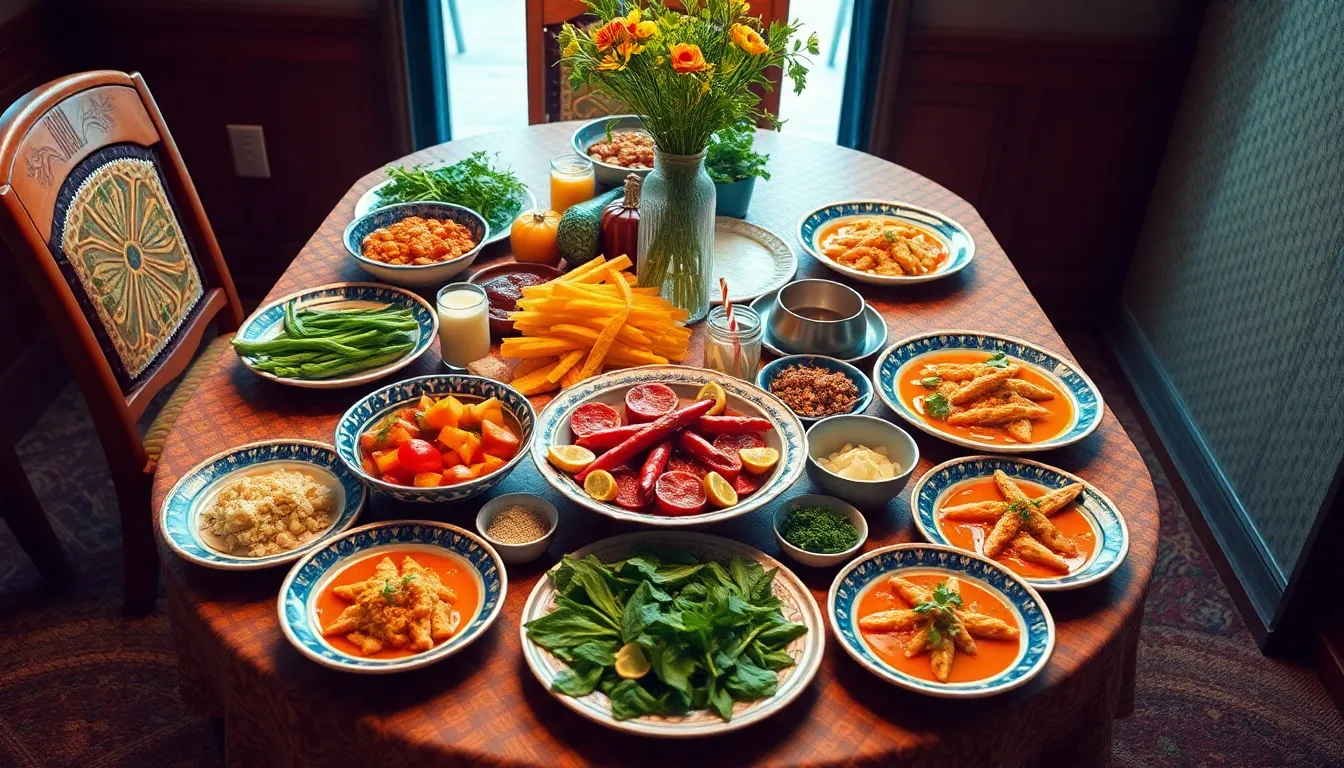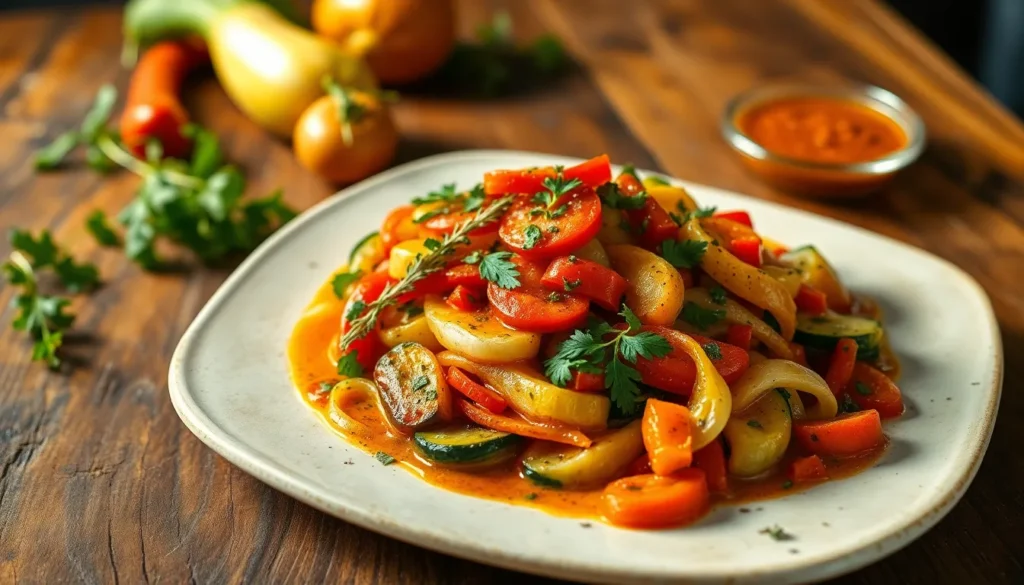Table of Contents
ToggleIn the bustling world of culinary delights, falotani is the hidden gem that’s ready to steal the spotlight. Imagine a dish that’s not just a feast for the eyes but also a flavor explosion that dances on your taste buds. If you haven’t tried falotani yet, you’re missing out on a gastronomic adventure that’ll make your mouth water and your stomach sing.
Overview of Falotani
Falotani represents a unique dish celebrated for its vibrant presentation and complex flavors. Originating from traditional culinary practices, this dish features a blend of spices that enhances its taste profile. Ingredients often include fresh vegetables, aromatic herbs, and protein sources like meat or legumes, contributing to a well-balanced nutritional value.
Aromatic spices such as cumin, coriander, and turmeric play a crucial role in creating falotani’s signature taste. Each ingredient complements the others, resulting in a harmonious medley that entices the palate. Widely regarded as a centerpiece for gatherings, falotani invites diners to share in a communal experience, promoting social connections over a satisfying meal.
Preparation involves a two-step process: marinating the protein and then cooking it to perfection. Specific cooking methods may vary, including grilling or simmering, but the goal remains consistent: achieving a tender and flavorful dish. The presentation often includes garnishes like fresh herbs or colorful sauces that elevate its visual appeal.
Falotani holds cultural significance in various regions, reflecting the local traditions and culinary techniques passed down through generations. Understanding its roots offers insight into the broader culinary landscape, showcasing the diversity of flavors embraced by different communities.
Diners often express their appreciation for falotani during special occasions or family gatherings. Taste testers frequently cite the layers of flavor as a key reason for its popularity. Engaging in falotani tasting offers an opportunity for culinary exploration, inviting individuals to discover new tastes while celebrating familiar comfort.
History of Falotani

Falotani has roots in traditional culinary practices. This dish evolved through centuries, influenced by varying regional ingredients and cooking methods.
Origins and Development
Falotani originated in regions known for diverse agricultural practices. Local farmers contributed ingredients like fresh vegetables and herbs. Culinary techniques were refined through generations, allowing falotani to develop a unique flavor profile. Over time, different cultures adopted and adapted the dish, incorporating distinct spices and proteins. This evolution resulted in numerous variations, each showcasing regional influences while maintaining the core essence that defines falotani.
Cultural Significance
Falotani plays a pivotal role in social gatherings and cultural celebrations. Families often serve this dish during festive occasions, highlighting its importance in communal dining experiences. The preparation process promotes collaboration, with many family members participating. As a symbol of hospitality, falotani encourages sharing and connection among diners. Celebrating local traditions, falotani represents, more than a meal, a unifying experience that strengthens bonds within communities.
Types of Falotani
Falotani showcases diverse variations influenced by regional ingredients and culinary traditions. Each type offers unique tastes and presentations that enhance the dining experience.
Regional Variations
Falotani varies significantly across regions, reflecting local culture and available ingredients. North African falotani often incorporates couscous and preserved lemons, while Middle Eastern versions may use flatbreads and aromatic spices. In South Asian regions, the dish might feature basmati rice and rich curries. Each variation, while distinct, retains the core essence associated with falotani, enhancing its popularity among different culinary communities.
Ingredients Used
The ingredients in falotani highlight its versatility and flavor profile. Key components include proteins like chicken, lamb, or chickpeas, which contribute to its heartiness. Fresh vegetables such as bell peppers, carrots, and zucchini add texture and color. Spice blends featuring cumin, coriander, and turmeric create a fragrant base that elevates the dish. Additionally, garnishes like fresh herbs and zesty sauces enhance both the visual appeal and taste, ensuring falotani remains a delightful culinary experience.
Preparation Methods
Falotani preparation showcases a blend of traditional and modern techniques, allowing for an array of flavors and presentations.
Traditional Techniques
Cooking falotani involves methods passed down through generations. Marinating proteins enhances the dish’s flavor profile and tenderness. Grilling offers a smoky element, while simmering provides a rich, hearty texture. Utilizing spice blends like cumin, coriander, and turmeric infuses warmth into the dish. Fresh vegetables, such as bell peppers and zucchini, boast vibrant colors while delivering essential nutrients. Family gatherings often see everyone participating, creating a sense of togetherness while preparing the meal.
Modern Adaptations
Innovations in falotani preparation embrace contemporary culinary trends. Sous-vide cooking ensures precise temperature control, resulting in perfectly tender protein. Using alternative grains or legumes, such as quinoa or lentils, accommodates dietary preferences. Incorporating global flavors, like Asian-inspired sauces or Mediterranean herbs, diversifies the traditional dish. Presentation techniques, including layering or deconstructing elements, enhance visual appeal. Chefs may also experiment with plating, elevating falotani as a modern culinary masterpiece that captivates diners.
Falotani stands out as a remarkable dish that embodies tradition and innovation. Its vibrant flavors and stunning presentation make it a favorite for gatherings and celebrations. This culinary gem not only satisfies the palate but also fosters connections among those who share it.
As diners explore the diverse variations of falotani, they’ll discover a world of tastes reflecting regional influences and culinary heritage. Whether enjoyed during special occasions or casual meals, falotani offers an unforgettable experience that celebrates the joy of food and community. Embracing both its rich history and modern adaptations, falotani continues to captivate food lovers everywhere.










